Top 10 Swallowtail Host Plants and Flowers to Grow
Updated: Dec. 22, 2023
Turn your backyard garden into a beautiful butterfly paradise with these perfect picks for swallowtail host plants and flowers.
Every butterfly gardener delights when showy swallowtail butterflies make an appearance. These butterflies are some of the largest in the garden, and their colorful wings and soaring flight patterns make them a treat to watch. After working for several years in a butterfly garden in Florida, I’ve learned which flowers swallowtails seem to gravitate toward the most. Now, I’m bringing those insider tips for swallowtail host plants and flowers to you. (Bonus: They work for other butterflies, too!)
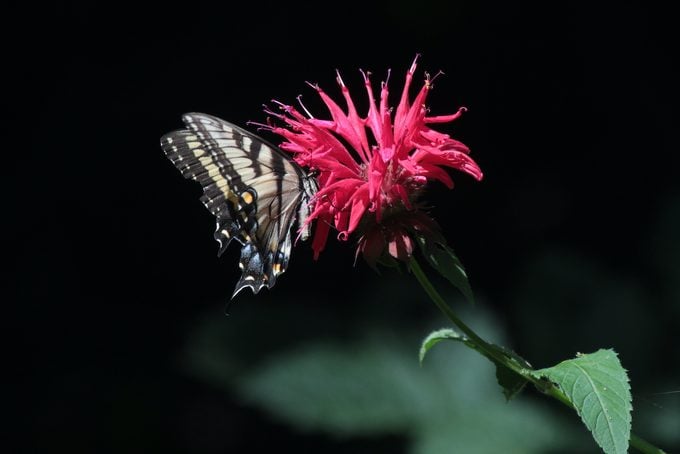
Bee Balm
Monarda didyma, Zones 4 to 9
Often grown for the minty citrus scent of the leaves, bee balm has striking tubular flowers that swallowtails can’t resist. Native to the eastern U.S. and Canada, it doesn’t often tolerate the extreme humidity of southern summers, but it thrives everywhere else.
Why we love it: Swallowtails love it, but deer typically stay away, which is always a bonus!
Discover the best Monarch butterfly flowers you should grow.
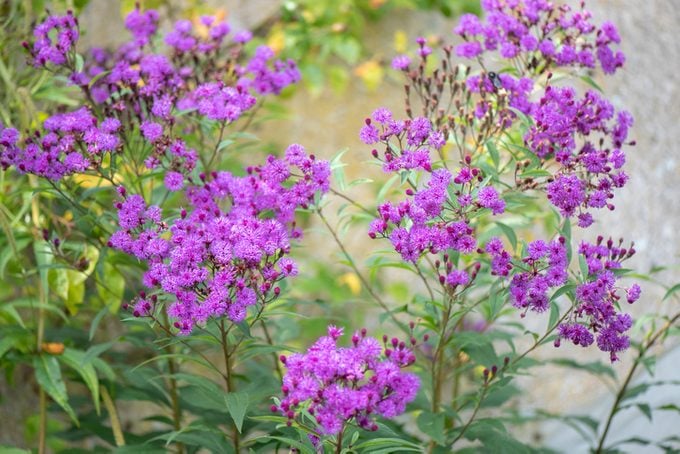
Ironweed
Vernonia sp., Zones 5 to 9
Many native wildflowers are attractive to butterflies, and ironweed is no exception. A late summer bloomer, ironweed sends flower stalks up to 7 feet with fuzzy purple flower clusters at the branched ends. For best flowering, be sure to provide moist soil.
Why we love it: Ironweed is a long bloomer. It lasts well into fall, providing nectar for the last butterflies of the season. And hummingbirds love it, too!
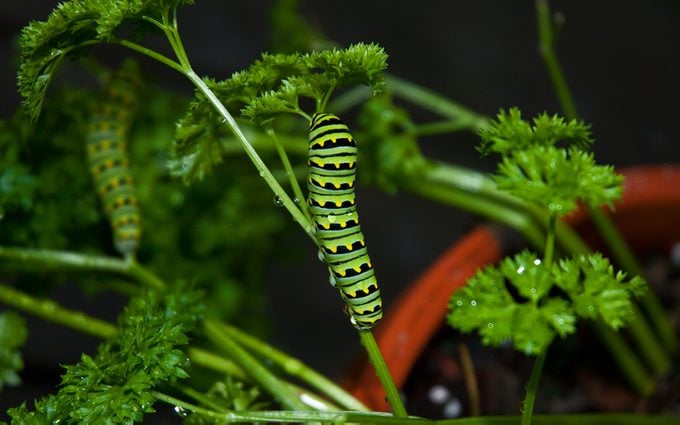
Parsley
Petroselinum crispum, Zones 2 to 11
Parsley isn’t just to garnish your dinner plate! This annual is a favorite host plant for black swallowtail caterpillars. They’ll also eat fennel, dill, Queen Anne’s lace and other members of the carrot family, but parsley is easy to grow in just about every garden. In the Deep South, provide some shade in the hot summer months.
Why we love it: All parsley, especially the curly varieties, look beautiful as a border in your flower bed or spilling out of a hanging planter.
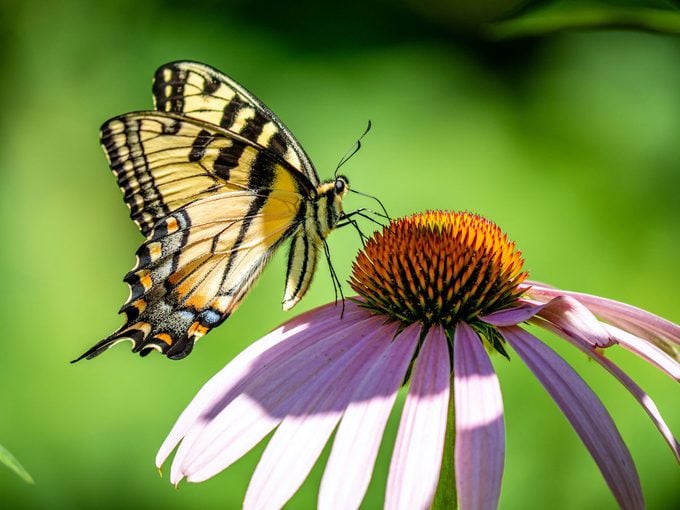
Coneflower
Echinacea purpurea, Zones 3 to 9
This native flower finds its way into every butterfly garden sooner or later. Coneflower is easy to grow and provides masses of tall purple blooms. For best growth, you should divide the clumps every few years. After coneflowers finish blooming, leave seed heads in place for songbirds to enjoy.
Why we love it: The central cone that gives the flower its name makes it easy to see swallowtails (and photograph them) when they land for a meal.
Learn how to identify Eastern tiger swallowtail butterflies and caterpillars.
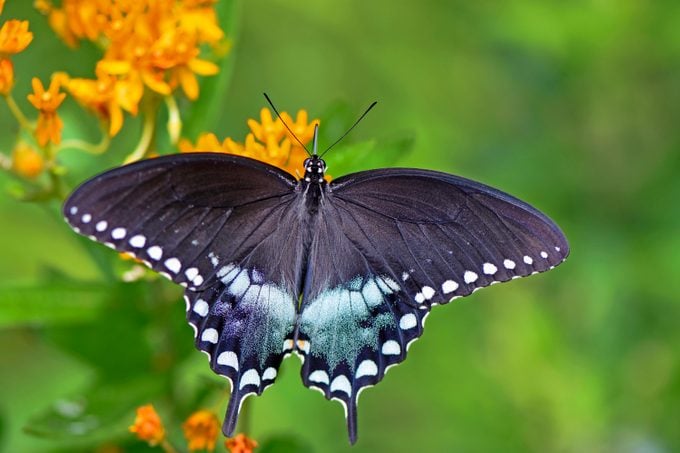
Butterfly Weed
Asclepias tuberosa, Zones 3 to 9
Butterfly weed is part of the milkweed family, known host plants for monarchs. But the flowers it produces are also attractive to many other kinds of butterflies, including the black swallowtail. This resilient plant is a must-have addition to any garden. It tolerates dry soil and prefers plenty of sunshine.
Why we love it: Butterfly weed doesn’t produce as much milk sap as other milkweeds, making it easier to tend for gardeners with sensitive skin.
When you’re done looking at swallowtail host plants and flowers, discover common myths about butterfly host plants.
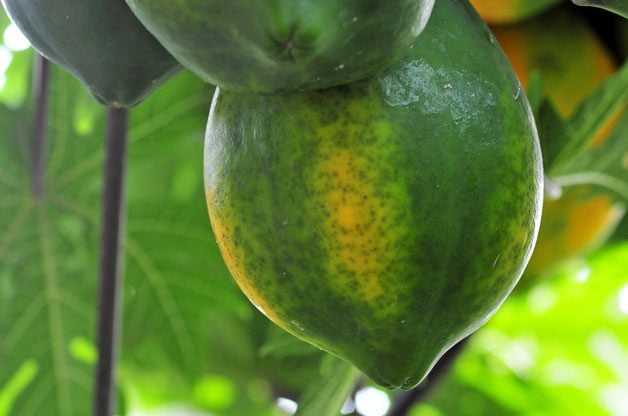
Pawpaw
Asimina triloba, Zones 5 to 9
While this shrub can be tricky to grow, it’s the host plant for the zebra swallowtail and the best way to draw this exceptionally beautiful butterfly to your yard. The deep root systems make transplanting a bit difficult, so consider starting from seed instead.
Why we love it: In addition to providing food for zebra swallowtail caterpillars, pawpaw produces edible fruit for humans as well.
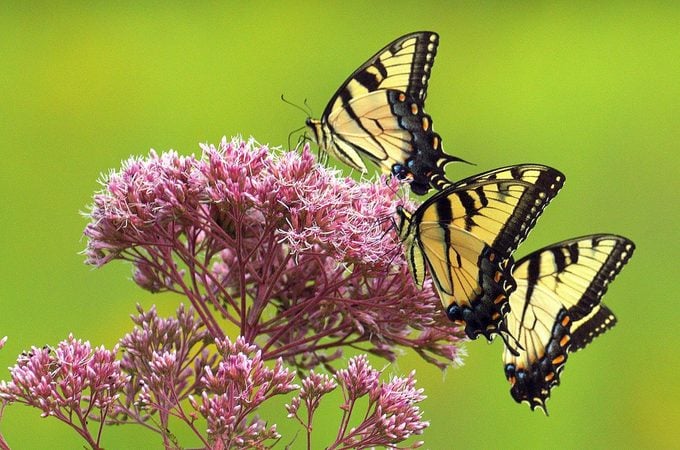
Joe Pye Weed
Eupatorium purpureum, Zones 4 to 9
This tall, native perennial prefers moist soil where it can stretch up to 9 feet high. The clusters of pink-purple blooms smell faintly of vanilla. Joe Pye weed blooms well into fall, bringing the season’s last butterflies to your yard.
Why we love it: Tall blooms give you a chance to observe and photograph visiting butterflies from a different perspective.
Learn how to attract spicebush swallowtail butterflies and caterpillars.
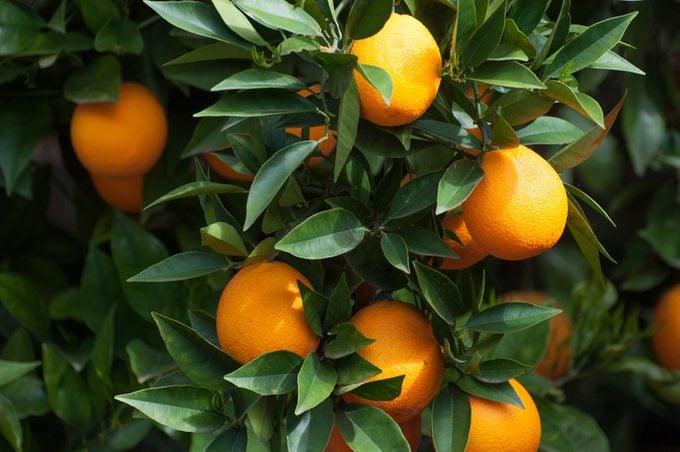
Citrus
Rutaceae, Zones 4 to 11
Giant swallowtail butterflies lay their eggs on trees in the citrus family, including lemon, lime and orange. This family also includes prickly ash (Aralia spinosa) and hoptree (Ptelea trifoliata), along with common rue (Ruta graevolens). Be careful, though. While they’re good swallowtail host plants, all of these trees have spiny branches!
Why we love it: Sweetly scented spring blooms and delicious fruit—need we say more?
Brush up on your butterfly knowledge with fascinating swallowtail butterfly facts.
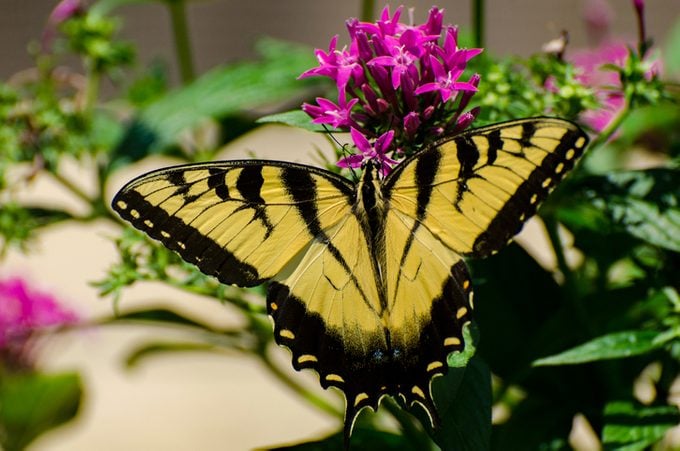
Pentas
Pentas lanceolata, Zones 10 to 11
The trumpet-shaped blooms that give pentas its common name, starflower, are a draw for many butterflies. Keep this annual flower well watered, but allow soil to dry slightly between waterings. Deadhead as needed for blooms all summer long.
Why we love it: Tiger swallowtails seem especially drawn to the tall red varieties like Butterfly Red. They might even visit the same plants at the same time every day.
Attract pipevine swallowtail butterflies to your garden.
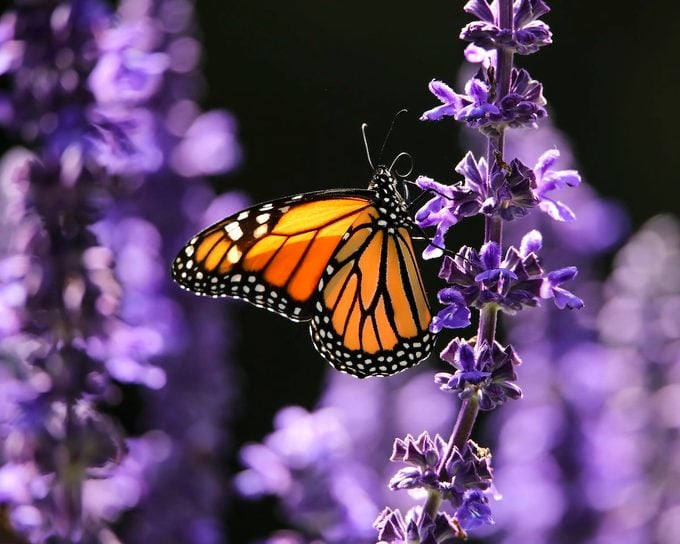
Mystic Spires Salvia
Salvia longispicata x farinacea, Zones 7 to 10
Most salvia species are excellent for butterflies, but the tall blue flower spikes of the cultivar, Mystic Spires, are especially suited to large butterflies like swallowtails. Plant in well-drained soil and cut back spent flowers to encourage new growth. If you don’t live in a warm region, grow this salvia as an annual instead.
Why we love it: This compact salvia hybrid stands up to heat and humidity all summer long.
Check out the top 10 butterfly host plants to attract pollinators.

Bonus: Swallowtail Butterfly Host Plants
Question: “What are the best host plants for black and yellow swallowtail butterflies?” asks Kathy Lorigan of Easton, Pennsylvania.
Kenn and Kimberly Kaufman: In your area, the most common swallowtail species are black swallowtail and eastern tiger swallowtail. Black swallowtails are fairly easy to attract, since their larvae feed on plants in the parsley family.
If you grow parsley or dill, just plant twice as much as you might want for your own use, then let the caterpillars munch on the rest. Eastern tiger swallowtail larvae eat leaves of various trees and shrubs, especially tulip tree, ash and native wild cherry. You can also host spicebush swallowtail larvae by planting spicebush or sassafras.
More Tips to Attract Swallowtail Butterflies
- Provide a Puddle: Butterflies often drink from mud puddles for water and minerals. Tiger swallowtails will especially appreciate a tiny area in your yard composed of damp soil with small rocks for landing. Here’s how to make a DIY butterfly puddler.
- Add Rocks: A few large flat rocks in a sunny area will invite butterflies to rest and give you great photo opportunities.
- Offer Shelter: Butterflies need a safe place to rest at night, like a brush pile or tall ornamental grasses.
